20th-century music
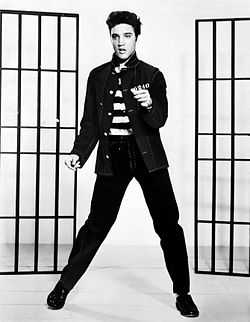
20th-century music is defined by the sudden emergence of advanced technology for recording and distributing music as well as dramatic innovations in musical forms and styles. Because music was no longer limited to concerts, opera-houses, clubs, and domestic music-making, it became possible for music artists to quickly gain global recognition and influence.
Twentieth-century music brought new freedom and wide experimentation with new musical styles and forms that challenged the accepted rules of music of earlier periods. Faster modes of transportation allowed musicians and fans to travel more widely to perform or listen. Amplification permitted giant concerts to be heard by those with the least expensive tickets, and the inexpensive reproduction and transmission or broadcast of music gave rich and poor alike nearly equal access to high-quality music performances.
Classical

Modernism
In the early 20th century, many composers, including Rachmaninoff, Richard Strauss, Giacomo Puccini, and Edward Elgar, continued to work in forms and in a musical language that derived from the 19th century. However, modernism in music became increasingly prominent and important; among the most important modernists were Alexander Scriabin, Claude Debussy, and post-Wagnerian composers such as Gustav Mahler and Richard Strauss, who experimented with form, tonality and orchestration.[1] Busoni, Stravinsky, Schoenberg, and Schreker were already recognized before 1914 as modernists, and Ives was retrospectively also included in this category for his challenges to the uses of tonality.[1] Composers such as Ravel, Milhaud, and Gershwin combined classical and jazz idioms.
Nationalism
Late-Romantic and modernist nationalism was found also in British, American, and Latin-American music of the early 20th century. Composers such as Ralph Vaughan Williams, Aaron Copland, Carlos Chávez, and Heitor Villa-Lobos used folk themes collected by themselves or others in many of their major compositions.
Microtonal music
In the early decades of the 20th century, composers such as Julián Carrillo, Mildred Couper, Alois Hába, Charles Ives, Erwin Schulhoff, Ivan Wyschnegradsky turned their attention to quarter tones (24 equal intervals per octave), and other finer divisions. In the middle of the century composers such as Harry Partch and Ben Johnston explored just intonation. In the second half of the century, prominent composers employing microtonality included Easley Blackwood, Jr., Wendy Carlos, Adriaan Fokker, Terry Riley, Ezra Sims, Karlheinz Stockhausen, La Monte Young, and Iannis Xenakis.
Neoclassicism
A dominant trend in music composed from 1923 to 1950 was neoclassicism, a reaction against the exaggerated gestures and formlessness of late Romanticism which revived the balanced forms and clearly perceptible thematic processes of earlier styles. There were three distinct "schools" of neoclassicism, associated with Igor Stravinsky, Paul Hindemith, and Arnold Schoenberg. Similar sympathies in the second half of the century are generally subsumed under the heading "postmodernism".[2]
Experimental music
A compositional tradition arose in the mid-20th century—particularly in North America—called "experimental music". Its most famous and influential exponent was John Cage.[3] According to Cage, "an experimental action is one the outcome of which is not foreseen",[4] and he was specifically interested in completed works that performed an unpredictable action.[5]
Minimalism
Minimalist music, involving a simplification of materials and intensive repetition of motives began in the late 1950s with the composers Terry Riley, Steve Reich, and Philip Glass. Later, minimalism was adapted to a more traditional symphonic setting by composers including Reich, Glass, and John Adams. Minimalism was practiced heavily throughout the latter half of the century and has carried over into the 21st century, as well as composers like Arvo Pärt, Henryk Górecki and John Tavener working in the holy minimalism variant. For more examples see List of 20th-century classical composers.
Contemporary classical music
In the broadest sense, contemporary music is any music being written in the present day. In the context of classical music the term is informally applied to music written in the last half century or so, particularly works post-1960. Standard reference works do not consistently follow this definition since it is a word that describes a movable time frame, rather than a particular style or unifying idea.
Many composers working in the early 21st century were prominent figures in the 20th century. Some younger composers such as Oliver Knussen, Thomas Adès, and Michael Daugherty did not rise to prominence until late in the 20th century. For more examples see List of 21st-century classical composers.
Electronic music
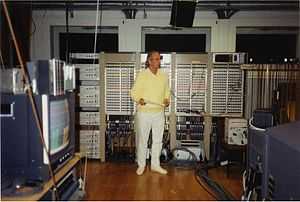
For centuries, instrumental music had either been created by singing, drawing a bow across or plucking taught gut or metal strings (string instruments), constricting vibrating air (woodwinds and brass) or hitting or stroking something (percussion). In the early twentieth century, devices were invented that were capable of generating sound electronically, without an initial mechanical source of vibration.
As early as the 1930s, composers such as Olivier Messiaen incorporated electronic instruments into live performance. Recording technology was used to produce art music, as well. The musique concrète of the late 1940s and 1950s was produced by editing together natural and industrial sounds.
In the years following World War II, some composers were quick to adopt developing electronic technology. Electronic music was embraced by composers such as Edgard Varèse, Karlheinz Stockhausen, Milton Babbitt, Pierre Boulez, Luigi Nono, Herbert Brün, and Iannis Xenakis.
In the 1950s the film industry also began to make extensive use of electronic soundtracks. From the late 1960s onward, much popular music was developed on synthesizers by pioneering groups like Heaven 17, The Human League, Art of Noise, and New Order.
Folk music
Folk music, in the original sense of the term as coined in the 18th century by Johann Gottfried Herder, is music produced by communal composition and possessing dignity, though by the late 19th century the concept of ‘folk’ had become a synonym for ‘nation’, usually identified as peasants and rural artisans, as in the Merrie England movement and the Irish and Scottish Gaelic Revivals of the 1880s.[6] Folk music was normally shared and performed by the entire community (not by a special class of expert or professional performers, possibly excluding the idea of amateurs), and was transmitted by word of mouth (oral tradition).
In addition, folk music was also borrowed by composers in other genres. Some of the work of Aaron Copland clearly draws on American folk music.
 |
|
| Problems playing this file? See media help. | |
Bluegrass music
Opera
In the early years of the century Wagnerian chromatic harmony was extended by opera composers such as Richard Strauss (Salome, 1905; Die Frau ohne Schatten, 1917), Claude Debussy (Pelléas et Mélisande, 1902), Giacomo Puccini (Madama Butterfly, 1904; Il trittico, 1918), Ferruccio Busoni (Doktor Faust, 1916, posthumously completed by his student Philipp Jarnach), Béla Bartók (Bluebeard's Castle, 1911–17), and Hans Pfitzner (Palestrina, 1917).
Further extension of the chromatic language finally broke with tonality in the early operas of Arnold Schoenberg (Erwartung, 1909; Die glückliche Hand, 1912) and his student Alban Berg (Wozzeck, 1925), both of whom adopted twelve-tone technique for their later operas: Schoenberg's Moses und Aron, and Berg’s Lulu. Neither of these operas were completed in their composers’ lifetimes, however, so that the first completed opera using the twelve-tone technique was Karl V (1938) by Ernst Krenek.
At the same time, the neoclassicism that became fashionable in the 1920s is represented by Stravinsky's opera buffa Mavra (1922) and his opera-oratorio Oedipus Rex (1927). Later in the century his last opera, The Rake's Progress (1951), also marks the end of the neoclassical phase of his compositions. Other operas of this period by composers identified as neoclassicists include Paul Hindemith's Mathis der Maler (1938) and Francis Poulenc's Les mamelles de Tirésias (1945).
The leading opera composers of the third quarter of the century include the Englishmen Benjamin Britten (Peter Grimes, 1945; Billy Budd, 1951; The Turn of the Screw, 1954; A Midsummer Night's Dream, 1960, Death in Venice, 1973) and Michael Tippett (The Midsummer Marriage, 1955; King Priam, 1962; The Knot Garden, 1970), and the German Hans Werner Henze (Boulevard Solitude 1951; Elegy for Young Lovers, 1961; Der junge Lord, 1964; The Bassarids, 1966; We Come to the River, 1976).
Popular music
Popular music, sometimes abbreviated pop music (although the term "pop" is used in some contexts as a more specific musical genre), is music belonging to any of a number of musical styles that are broadly popular or intended for mass consumption and wide commercial distribution—in other words, music that forms part of popular culture.
Popular music includes Broadway tunes, ballads and singers such as Frank Sinatra.[7]
The relationship (particularly, the relative value) of classical music and popular music is a controversial question. Richard Middleton writes:
Neat divisions between "folk" and "popular", and "popular" and "art", are impossible to find... arbitrary criteria [are used] to define the complement of "popular". "Art" music, for example, is generally regarded as by nature complex, difficult, demanding; "popular" music then has to be defined as "simple", "accessible", "facile". But many pieces commonly thought of as "art" (Handel's Hallelujah Chorus, many Schubert songs, many Verdi arias) have qualities of simplicity; conversely, it is by no means obvious that the Sex Pistols' records were "accessible", Frank Zappa's work "simple", or Billie Holiday's "facile".[8]
Moreover, composers such as Scott Joplin, George Gershwin and Andrew Lloyd Webber tried to cater to both popular and high brow tastes.
Blues

Blues musicians such as Muddy Waters brought the Delta Blues, played mostly with acoustic instruments, from the Mississippi delta north to cities like Chicago, where they used more electric instruments to form the Chicago Blues.[9]
 |
The Wrong Road
The Hall Brothers' "The Wrong Road" |
| Problems playing this file? See media help. | |
Country music
Country music, once known as Country and Western music, is a popular musical form developed in the southern United States, with roots in traditional folk music, spirituals, and the blues.[10]
Disco
Disco is an up-tempo style of dance music that originated in the early 1970s, mainly from funk, salsa, and soul music, popular originally with gay and black audiences in large U.S. cities, and derives its name from the French word discothèque.
Hip hop
Subgenres/periods of history in hip hop include: Old school hip hop, New school hip hop, Gangsta rap, Underground hip hop, Alternative hip hop and Crunk/Snap music.
Jazz
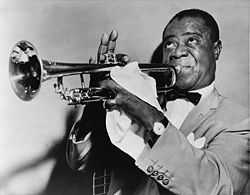
Jazz has evolved into many sometimes contrasting subgenres including smooth jazz, Bebop, Swing, Fusion, Dixieland and free jazz. Jazz was created out of a combination of the Blues, Ragtime, African Spirituals and various ethnic music.
New-age music
There are new-age compositions which sit equally comfortably in the world music category.
Polka
The polka, which first appeared in Prague in 1837, continued to be a popular form of dance music through the 20th century, especially in Czechoslovakia, Poland, and areas of the United States with a large population of central-European descent. A particularly well-known 20th-century example is Jaromír Vejvoda’s Modřanská polka (1927), which became popular during World War II in Czechoslovakia as "Škoda lásky" ("A Waste of Love"), in Germany as the Rosamunde-Polka, and among the allied armies as the Beer Barrel Polka (as a song, known as "Roll out the Barrel"). In the United States, the "Eastern style" Polish urban polka remained popular until about 1965. Polka music rose in popularity in Chicago in the late 1940s after Walter ‘Li’l Wally’ Wallace Jagiello created "honky" polka by combining the Polish-American rural polka with elements of Polish folksong and krakowiak. A later, rock-influenced form is called "dyno" polka.[11]
Rock and roll
Rock and roll developed from earlier musical forms including rhythm and blues, which had earlier been called race music, and country music.[12] See also rock musical and rock opera.
Progressive rock
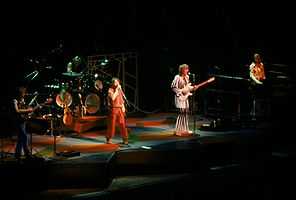
Punk rock
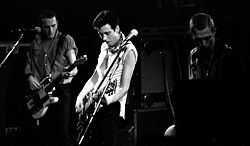
 |
"Gloria: In Excelsis Deo / Gloria"
song by Patti Smith, an example of early punk rock. |
| Problems playing this file? See media help. | |
World music
See also
Notes
References
- Botstein, Leon. 2001. "Modernism". The New Grove Dictionary of Music and Musicians, edited by Stanley Sadie and John Tyrrell. London: Macmillan.
- Cage, John. 1961. Silence: Lectures and Writings. Middletown, Connecticut: Wesleyan University Press.
- Černušák, Gracian, Andrew Lamb, and John Tyrrell. 2001. "Polka". The New Grove Dictionary of Music and Musicians, edited by Stanley Sadie and John Tyrrell. London: Macmillan Publishers.
- Cook, Nicholas, and Anthony Pople. 2004. The Cambridge History of Twentieth-Century Music. Cambridge and New York: Cambridge University Press. ISBN 0-521-66256-7
- Gilliland, John. 1969. "Smack Dab in the Middle on Route 66: A Skinny Dip in the Easy Listening Mainstream". Pop Chronicles, episode 22. KRLA 1110 (8 June).
- Grant, Morag Josephine. 2003. "Experimental Music Semiotics". International Review of the Aesthetics and Sociology of Music 34, no. 2 (December): 173–91.
- Jones, Alan, and Jussi Kantonen. 1999. Saturday Night Forever: The Story of Disco. Edinburgh and London: Mainstream. ISBN 1-84018-177-X (Revised and updated edition, Edinburgh and London: Mainstream, 2005. ISBN 1-84596-067-X.)
- Kennedy, Michael, and Joyce Bourne (eds.). 2006. The Oxford Dictionary of Music, 2nd edition, revised. Oxford and New York: Oxford University Press. ISBN 0-19-861459-4
- Lee, Douglas A. 2002. Masterworks of Twentieth-Century Music: The Modern Repertory of the Symphony Orchestra. New York: Routledge. ISBN 0-415-93846-5 ISBN 0-415-93847-3
- Mauceri, Frank X. 1997. "From Experimental Music to Musical Experiment". Perspectives of New Music 35, no. 1 (Winter): 187–204.
- Middleton, Richard. 1990. Studying Popular Music. Philadelphia: Open University Press. ISBN 0-335-15276-7
- Morgan, Robert P. 1991. Twentieth-Century Music: A History of Musical Style in Modern Europe and America. New York: W. W. Norton. ISBN 0-393-95272-X
- Pegg, Carole. 2001. "Folk Music". The New Grove Dictionary of Music and Musicians, edited by Stanley Sadie and John Tyrrell. London: Macmillan.
- Rubin, Rachel, and Jeffrey Paul Melnick. 2001. American Popular Music: New Approaches to the Twentieth Century. Amherst: University of Massachusetts Press. ISBN 1-55849-267-4 ISBN 1-55849-268-2
- Salzman, Eric. 2002. Twentieth-Century Music: An Introduction, 4th edition. Upper Saddle River, NJ: Prentice Hall. ISBN 0-13-095941-3
- Whittall, Arnold. 2001. Neo-classicism. The New Grove Dictionary of Music and Musicians, second edition, edited by Stanley Sadie and John Tyrrell. London: Macmillan Publishers.
- Whittall, Arnold. 2003. Exploring Twentieth-Century Music: Tradition and Innovation. Cambridge and New York: Cambridge University Press. ISBN 0-521-81642-4 ISBN 0-521-01668-1